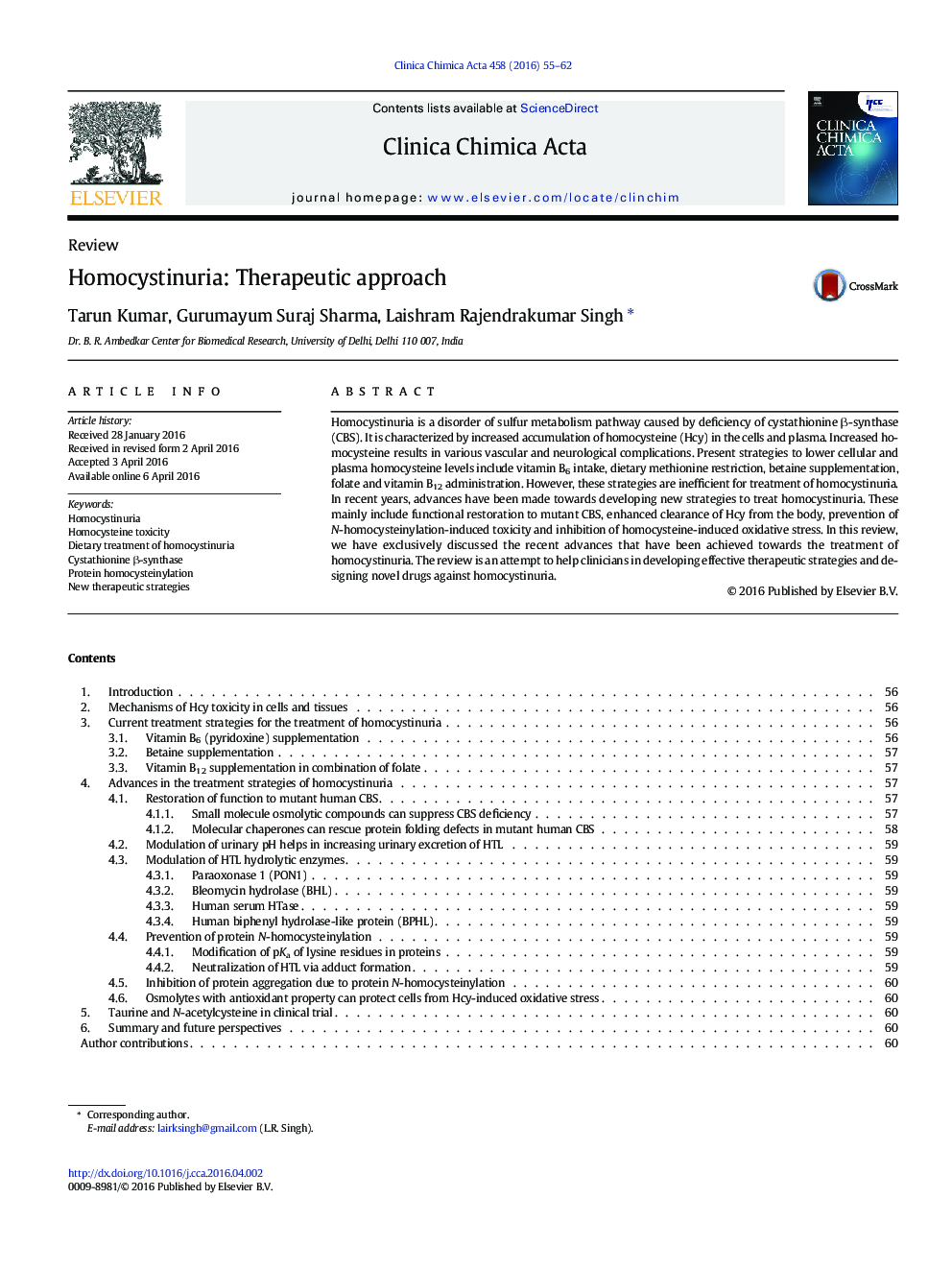| Article ID | Journal | Published Year | Pages | File Type |
|---|---|---|---|---|
| 1965089 | Clinica Chimica Acta | 2016 | 8 Pages |
•Homocystinuria is caused by functional defects in cystathionine β-synthase.•The present review includes current treatment strategies for homocystinuria.•An overview of recent advances in the treatment strategies for homocystinuria
Homocystinuria is a disorder of sulfur metabolism pathway caused by deficiency of cystathionine β-synthase (CBS). It is characterized by increased accumulation of homocysteine (Hcy) in the cells and plasma. Increased homocysteine results in various vascular and neurological complications. Present strategies to lower cellular and plasma homocysteine levels include vitamin B6 intake, dietary methionine restriction, betaine supplementation, folate and vitamin B12 administration. However, these strategies are inefficient for treatment of homocystinuria. In recent years, advances have been made towards developing new strategies to treat homocystinuria. These mainly include functional restoration to mutant CBS, enhanced clearance of Hcy from the body, prevention of N-homocysteinylation-induced toxicity and inhibition of homocysteine-induced oxidative stress. In this review, we have exclusively discussed the recent advances that have been achieved towards the treatment of homocystinuria. The review is an attempt to help clinicians in developing effective therapeutic strategies and designing novel drugs against homocystinuria.
